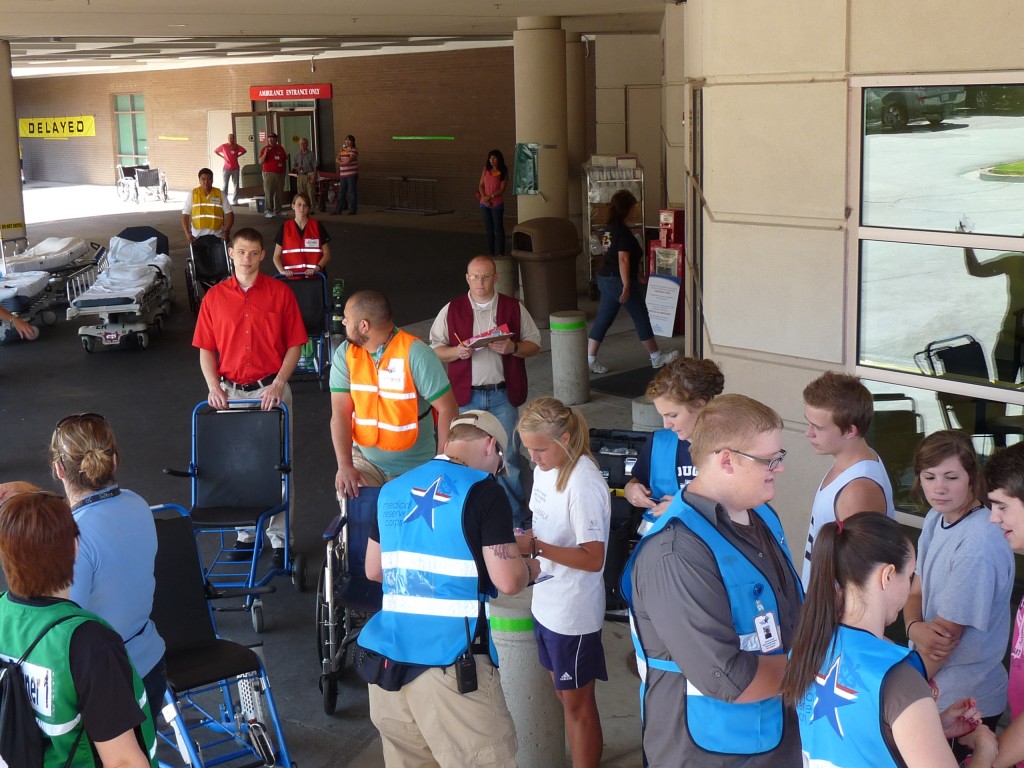By Nicole Dunifon, MS, Program Analyst, NACCHO, and Daniel Reategui, MHS, NACCHO Policy and Practice Scholar
This post originally ran on NACCHO’s Preparedness Brief blog. For more preparedness news and information, visit http://www.nacchopreparedness.org.
 The Hospital Preparedness Program (HPP), administered by the Office of the Assistant Secretary for Preparedness and Response (ASPR), provides grant funding to states in order to support sustainable community healthcare coalitions (HCCs), improve medical surge capacity, and enhance community and hospital preparedness in the event of a public health emergency. With the development of ASPR’s Healthcare Preparedness Capabilities: National Guidance for Healthcare System Preparedness, local health departments (LHDs) across the country have now begun to partner with HCCs and healthcare organizations on emergency preparedness planning, training, and exercises. Most recently, coalitions have played a pivotal role in coordinating with LHDs and healthcare systems during the Ebola response.
The Hospital Preparedness Program (HPP), administered by the Office of the Assistant Secretary for Preparedness and Response (ASPR), provides grant funding to states in order to support sustainable community healthcare coalitions (HCCs), improve medical surge capacity, and enhance community and hospital preparedness in the event of a public health emergency. With the development of ASPR’s Healthcare Preparedness Capabilities: National Guidance for Healthcare System Preparedness, local health departments (LHDs) across the country have now begun to partner with HCCs and healthcare organizations on emergency preparedness planning, training, and exercises. Most recently, coalitions have played a pivotal role in coordinating with LHDs and healthcare systems during the Ebola response.
Roles of Healthcare Coalitions during the Ebola Response
HCCs are taking measures to support hospitals and LHDs prepare for an Ebola patient. During the National Healthcare Resource Center webinar series, The Role of Coalitions in Ebola Preparedness and Response, the MESH Coalition in Indianapolis reported that hospital partners would have to use approximately 48 Personal Protection Equipment (PPE) kits per person, per patient, per day to treat an individual with Ebola. With such a large quantity of PPE needed, MESH worked with its partners to determine what PPE they had and what they would need in order to treat a patient. To help hospital partners meet this need, the coalition worked to create PPE kits that could easily be accessed and shared among its members.
In Minnesota, the Hennepin County Human Services and Public Health department worked with coalition partners to educate and inform the West African community about Ebola. Hennepin County is the largest county in Minnesota and home to the largest Liberian population outside of West Africa. The LHD worked with the Minnesota African Taskforce Against Ebola, which is a coalition of community groups, faith-based organizations, and leaders from the West African communities, to plan two community events that focused on educating the community about Ebola and how it can be transmitted. Additionally, Hennepin County Human Services and Public Health conducted a training for the Medical Reserve Corps (MRC), which included a panel discussing cultural issues, stigma, and discrimination that West African community members were facing due to Ebola. Following the training, MRC volunteers became peer educators and provided community members with up to date information on Ebola.
How to Sustain Healthcare Coalitions for Future Emergency Response Activities
Due to the $100 million budget cut to HPP, the type of work and coordination that HCCs are putting into the Ebola response may become a thing of the past for future emergency responses. Continued reductions to HPP may threaten the partnerships that HCCs and LHDs have created. HCCs play an important role in training healthcare partners in emergency preparedness and planning. However, the ability for LHDs and HCCs to continue engaging in these types of preparedness activities may be hindered due to limited resources and staffing.
Given the support and resources that coalitions provide to its members during a response, it is important that HCCs begin to focus on sustainable practices. HCCs can look to their peers for examples of coalitions that are exploring new models of sustainability. To help begin the discussion of sustainability, ASPR, the Association of State and Territorial Health Officials (ASTHO), and NACCHO collaborated on the webinar, Healthcare Coalition: Governance and Sustainability, which highlighted promising governance and sustainability practices of six HCCs.
Recognizing that LHDs and communities vary throughout the United States and that HCCs are in various stages of development, and have diverse governance models, NACCHO and ASTHO created a matrix and frequently asked questions document to provide a snapshot of the information provided during the webinar. These resources are intended to serve as a tool, allowing LHDs and HCCs to compare different HCC sustainability models and identify HCC elements (e.g., geographic location, size of population served, type of organization, funding model) that can be considered for implementation of sustainability practices.
For more public health preparedness news and information, visit NACCHO’s Preparedness Brief blog.








